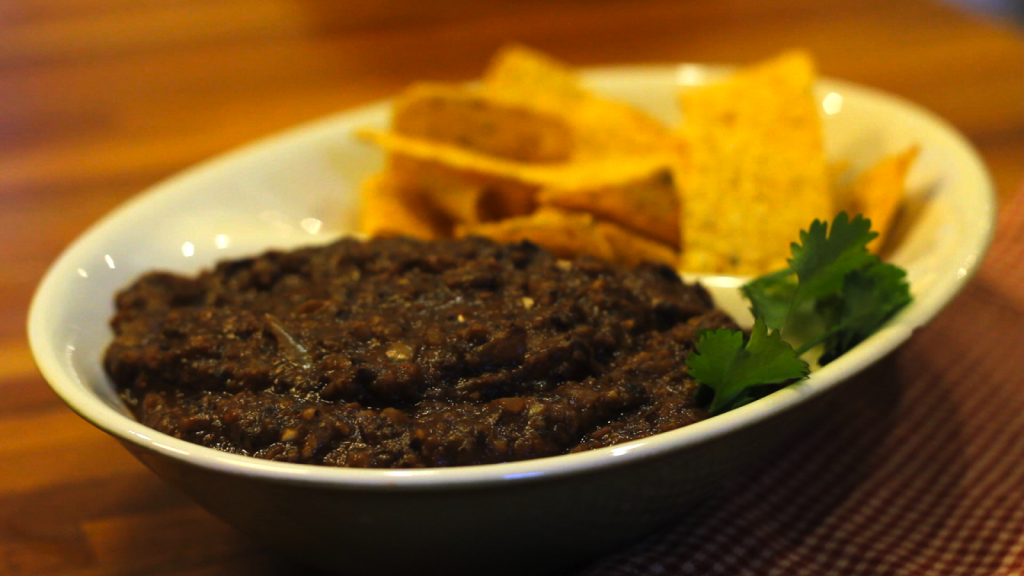


Plant-Based Recipes, Health Resources, & Inspiration for Kind Eating


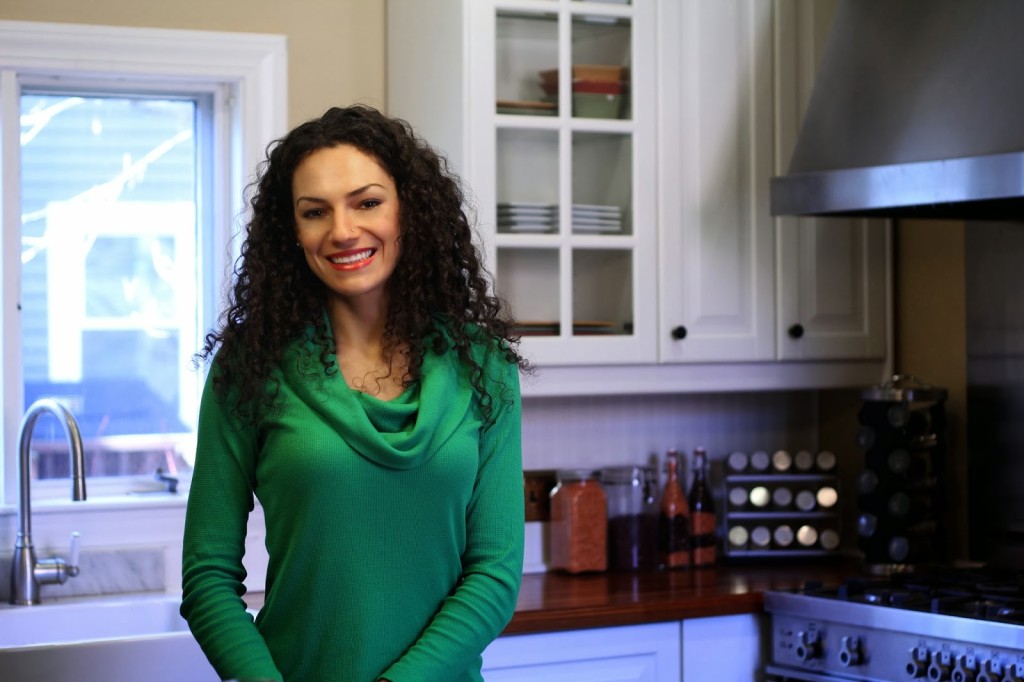
I am so excited to share my third video series with everyone! I chose to focus the series entirely on beans. Why? Because I believe beans address a number of concerns and misconceptions people have about adopting a plant-based diet.
Misconception: “I won’t get enough protein.”
Reality: Beans are a fantastic source of protein. Just one cup of cooked soybeans has 29 grams of protein, one cup of cooked lentils has 18 grams, and 1 cup of cooked black beans has 15 grams. Adult men need about 56 grams of protein per day and adult women need about 46 grams per day. If you make beans a regular part of your diet it would be difficult not to meet these requirements. After all, if you are consuming enough calories, it is almost impossible to be protein deficient. (Note: Not only do most people consume much more protein than they need, they actually consume more protein than is safe. See here.)
Reality: What could possibly be heartier and more filling than beans? Beans are rich in fiber which means they will satisfy hunger and keep you feeling full for hours. (The soluble fiber in beans also helps lower cholesterol and reduces the risk of heart attack and stroke.)
Reality: Do you know how many things you can make with beans? This series barely skims the surface of the options. You can make everything from casseroles to salads to burritos to curries to jambalayas and more. You can even make brownies and blondies from beans! Beans are featured in distinct ways in cuisines all across the globe. Plus, there are many different kinds of beans, from lentils to chickpeas to kidney beans and beyond, each with their own distinct flavors and textures.
Misconception: “It’s too expensive.”
Reality: Nothing is cheaper than beans. If you can afford anything, you can afford beans.
Misconception: “I don’t have time to cook.”
Reality: If you have time to get out your can opener, then you have enough time. All you need to do is open the cans, dump the beans into a bowl, and season. That’s it. If you are feeling extra fancy, you can even heat the beans. Voila! Dinner is served. It would probably take you longer to order and pay for a meal at a drive-thru. (See my recipe for “Incredibly Easy Pumpkin Chili”)
Misconception: “I don’t know how to cook.”
Reality: If you are able to use a can opener, you have what it takes. See above.
Misconception: “I don’t have access to ‘specialty vegan food’ where I live.”
Reality: One of the great things about beans is that they are accessible in all parts of the country, rural and urban alike. They are sold at every grocery store, quickie mart, and even at many gas stations.
Misconception: “I won’t get enough calcium.”
Reality: Beans are loaded with calcium! Although the dairy industry would like people to believe that cow’s milk is the only source of calcium, this simply isn’t true. (And, in fact, the higher a country’s consumption of cow’s milk, the higher their rate of osteoporosis.) Beans also contain magnesium, which the body uses along with calcium to build bones. Physicians Comittee for Responsible Medicine has a useful chart of the calcium and magnesium content in many beans here. In a recent study, researchers found that those who consumed more high-phytate foods (i.e. beans) had stronger bones. The researchers conclude that dietary phytate had protective effects against osteoporosis and that low phytate consumption should be considered an osteoporosis risk factor. (For more information on this study, see here.)
Misconception: “I’m gluten-free/allergic to soy so a plant-based diet would be too restrictive.”
Reality: Beans are gluten-free and there are many other types of beans besides soybeans. Also, see “There’s not enough variety.”
Misconception: “There are too many carbs in a plant-based diet.”
Reality: There is a lot of misinformation out surrounding carbohydrates. Be smarter than the urban myths and don’t get sucked in! Recently, researchers at Harvard looked at the diets of 100,000 people and found that low-carb diets were associated with higher all-cause mortality, higher cardiovascular disease mortality, and higher cancer mortality. True, muffins and donuts and cookies are carbohydrates and if you load up on those it’s quite possible you will gain weight, your blood sugar will spike, etc. However, there is a world of difference between refined carbohydrates and complex carbohydrates, and beans are complex carbohydrates. To avoid complex carbohydrates because they technically fall under the same food group as refined carbohydrates is just silly. It would be like refusing to travel on an airplane because you are against war and in wars they use jet planes.
Beans are truly one of the healthiest foods on the planet and anyone who cares about their health ought to make them a regular part of their diet. A recent international study found that there is an 8% reduction in risk of death for every two tablespoons of daily legume intake. An 8% reduction from just two tablespoons! So, to paraphrase Dr. Michael Gregor of NutritionFacts.org, if you want to increase your lifespan, eat beans. If, however, you’re suicidal and want to decrease your lifespan, enjoy a bean-free diet.
So, in conclusion, when the little voice of doubt creeps into your head, just remember: BEANS. They are health-promoting, filling, protein-rich, fiber-rich, calcium-rich, versatile, simple, cheap, accessible and delicious… what’s not to love?
Further notes:
All the recipes in this series will be gluten-free, oil-free, and as always, 100% plant-based.
For those concerned about gas, know that a) studies have shown that this concern is largely overblown (ahem, excuse the pun) and that b) if you eat beans on a regular basis, your body adjusts and gas stops being an issue. I highly recommend reading this entertaining and informative article by Dr. Michael Gregor of NutritionFacts.org. Also see my past post on how to soak dried beans as soaking beans can ease digestion.
Check out these short but informative videos on the health-promoting benefits of beans:
Increased Lifespan from Beans
Beans, Beans Good for Your Heart
Beans and the Second Meal Effect
Phytates for the Prevention of Osteoporosis
* If you have ever heard that plant proteins need to be combined in specific ways order to be “complete,” rest assured that is an outdated nutritional theory from the 1950’s that is nothing more than a myth.
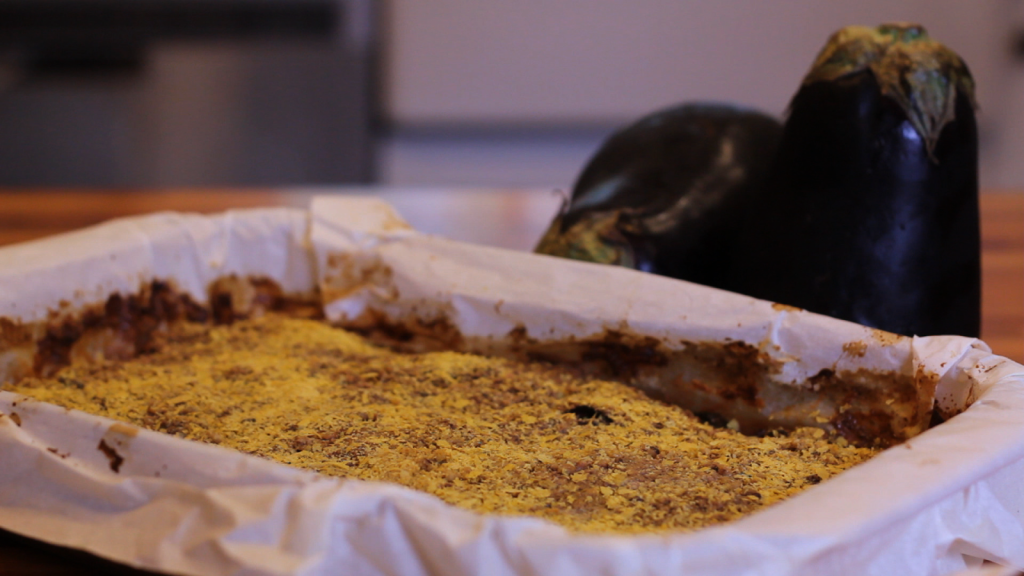
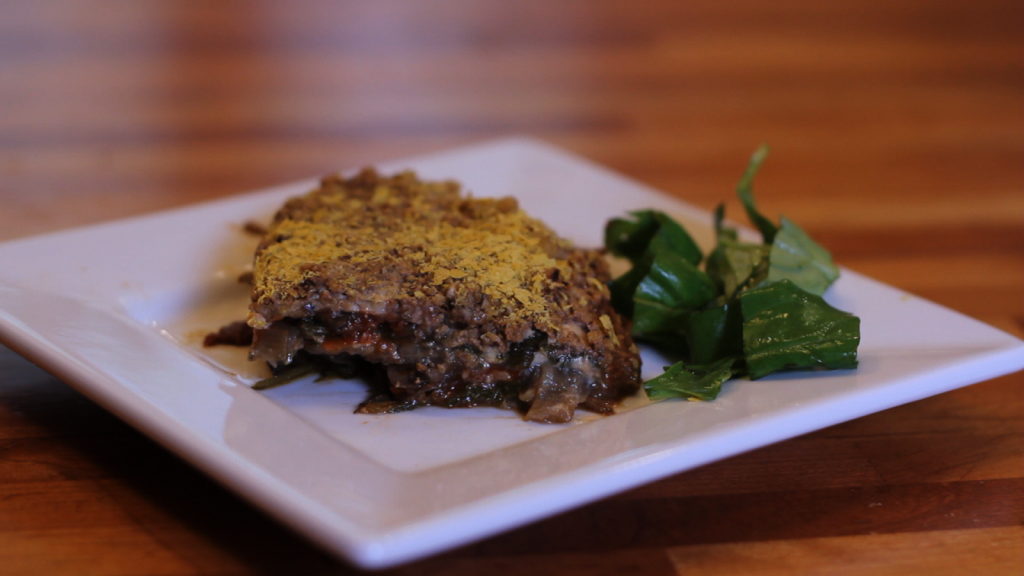
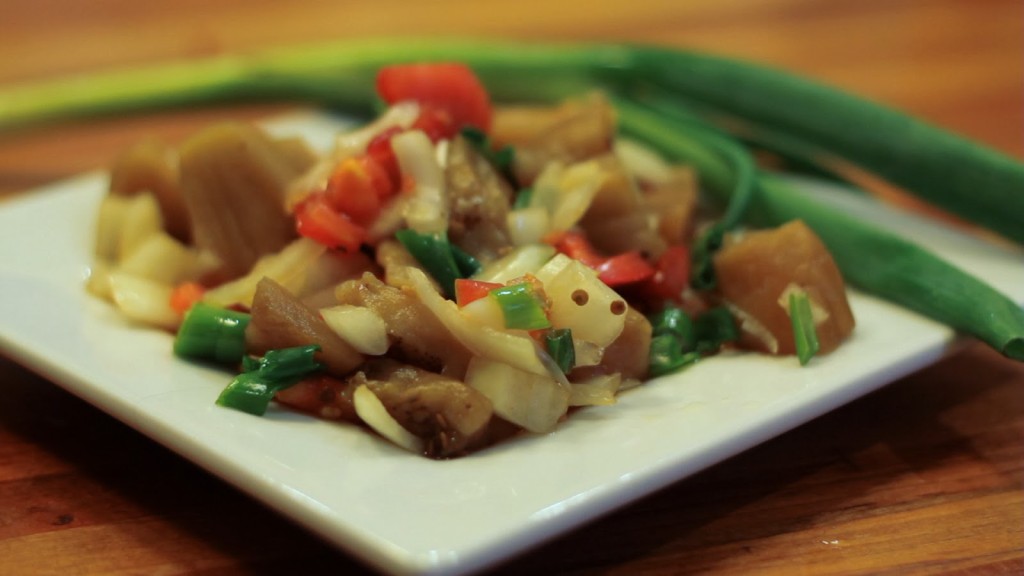
“Ensaladang Talong” is a traditional Filipino eggplant salad that is typically made with shrimp paste and lots of white vinegar. One of the reasons for so much white vinegar is because it helps reduce the fishy taste of the shrimp paste and the fish this salad usually accompanies. That just seems silly to me, especially when you could just not use any shrimp paste and serve it with something other than fish. Personally, I want to taste the ingredients in my dishes. If something doesn’t taste good and isn’t serving any particular function, then why bother including it?
In the recipe below, I show you how to prepare a fish-safe version of this salad. Since I wasn’t using shrimp paste and, therefore, didn’t need to worry about cutting any flavors, I used rice vinegar, which is milder and sweeter than white vinegar, and really enhances the tangy combination of the onion, tomatoes and chili.
I like to make this salad and then enjoy it in a variety of ways over the next several days. Some of my favorites ways to eat it are with grilled tofu, tossed with garbanzo beans, or over a bed of brown rice. What might some of your favorite ways to enjoy this salad be?
Ingredients:
1 large eggplant
2 tomatoes, chopped
1 onion, chopped
1/2 teaspoon salt (optional; I prefer to omit)
1 slice red chili
3/4 cup rice wine vinegar
2 tablespoons low-sodium soy sauce or tamari
2-3 scallions
Instructions:
1. Prick the flesh of one large eggplant with a fork and roast at 100 degrees for 45 minutes. Once cool, peel the skin, cut the stem and mash lightly with a fork.
2. In a bowl, combine two chopped tomatoes, one chopped onion, one half teaspoon salt and one slice of red chili. Add the eggplant and then toss to mix.
3. To prepare the dressing, mix three quarter cup of wine vinegar, two tablespoons of soy sauce and some freshly ground pepper. Pour the dressing over the vegetables and mix and then garnish with some sliced scallions.


Mustard greens are so incredibly healthful, it was hard to decide which of their many benefits I ought to focus on in this post. Here are just three reasons why you’ll want to incorporate more of these luscious leafies into your diet:
Cardiovascular Benefits
Mustard greens support the cardiovascular system in three significant ways. First, they are anti-inflammatory. Inflammation narrows the arteries and increases the risk that they’ll become blocked, so these anti-inflammatory properties are obviously a huge benefit. Second, by binding with bile acids in the intestines, mustard greens help lower cholesterol levels. And third, because mustard greens are exceptionally high in the B-vitamin folate, they help prevent homocystein build-up. Homocystein is an amino acid found in the blood that is acquired mostly from eating animal products. High levels are related to the development of heart and blood vessel disease.
Cancer Prevention
Mustard greens are also powerful cancer-fighters because they are LOADED with a broad spectrum of antioxidants. Chronic oxidative stress is a major risk factor for the development of most cancer types and antioxidants lower our risk of oxidative stress on our cells (hence the name: anti- oxidants). For the record, plants have on average 64 times more antioxidant power than animal products. The few antioxidants that do happen to be found in animal products are only there because those animals were fed plants.
Bone Health
And lastly (though I truly could go on endlessly), mustard greens are an excellent source of calcium. While dairy products have long been touted as “good for your bones,” the countries with the highest consumption of dairy also have the highest rates of osteoporosis. This is because dairy, like all animal products, is highly acidic. The body needs to keep a very specific acid-alkaline balance in order to function, so whenever animal products are consumed, the body must find an alkaline source so it leaches the calcium from our bones (which is high in alkaline). So, in fact, consuming dairy products are quite harmful to our bones. Mustard greens, on the other hand, along with other greens like kale, collards, bok choy, broccoli, and okra, are not acidic and thus only contribute to the strength of our bones.
So while you enjoy this quick and tasty recipe, you can also feel good knowing that you are eating one of the most healthful foods on the planet!
Resources:
http://www.whfoods.com/genpage.php?tname=foodspice&dbid=93
http://www.vrg.org/nutrition/calcium.php
http://www.pcrm.org/health/health-topics/calcium-and-strong-bones
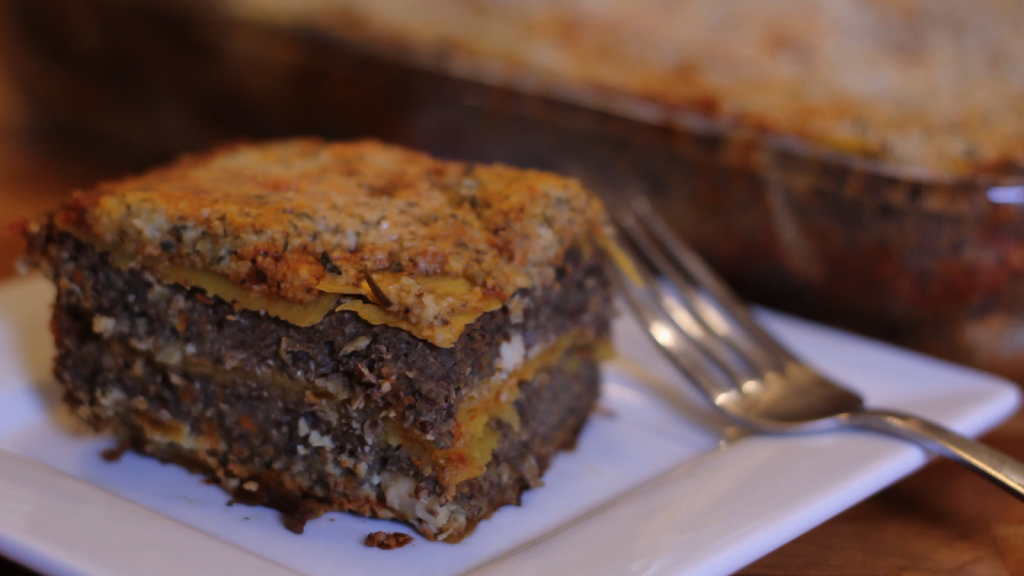
Need a dish that is guaranteed to impress? This is definitely the one.
I love this recipe because it includes everything we love about lasagna–the warmth, the comfort, and the heartiness. But, unlike traditional lasagna, my version is incredibly healthful. Not only does it leave out all animal products, it’s also made entirely of whole foods! Rather than using pasta noodles made with processed white flour, I instead use very thin slices of butternut squash. This makes the lasagna more healthful, more flavorful, and more colorful!
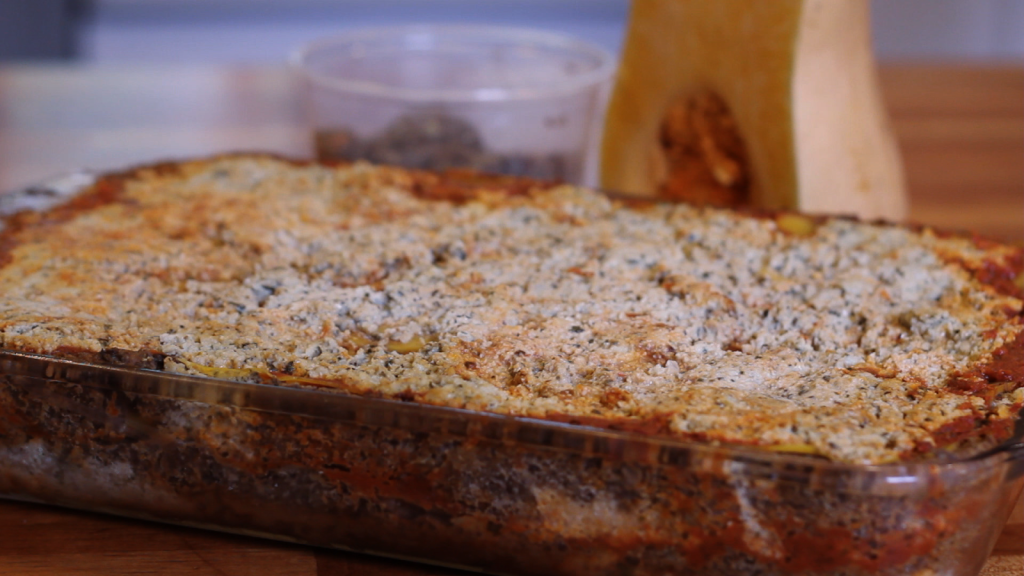
1/3 cup fresh basil
Instructions:
1. To make the sausage: Saute the carrot and onion for 10-15 minutes. Once browned, place vegetables into a food processor along with all the spices and flax. Add cooked quinoa and lentils and pulse just till ingredients begin to stick together (about 10-15 times). Place mixture in a pan and brown.
2. To make the ricotta: Place cashews, nondairy milk, lemon juice, garlic, and maple syrup in a food processor and blend till just smooth (remember, ricotta is somewhat grainy rather than completely whipped). Add in the basil, Italian herb blend, salt and pepper and pulse until blended in.
3. Preheat the oven to 400 degrees.
4. Spread a thin layer of marinara onto the bottom of a glass dish.
5. Layer the squash on top. Avoid overlapping pieces as much as possible.
6. Place a layer of ricotta on top.
7. Spread a layer of sausage crumbles on top.
8. Add another layer of squash and then another layer of marinara sauce.
9. Start again at step 6 and repeat until near the top of the dish. Top with any remaining ricotta.
10. Cover with tin foil and bake for 40 minutes or until a knife can be easily inserted all the way through.
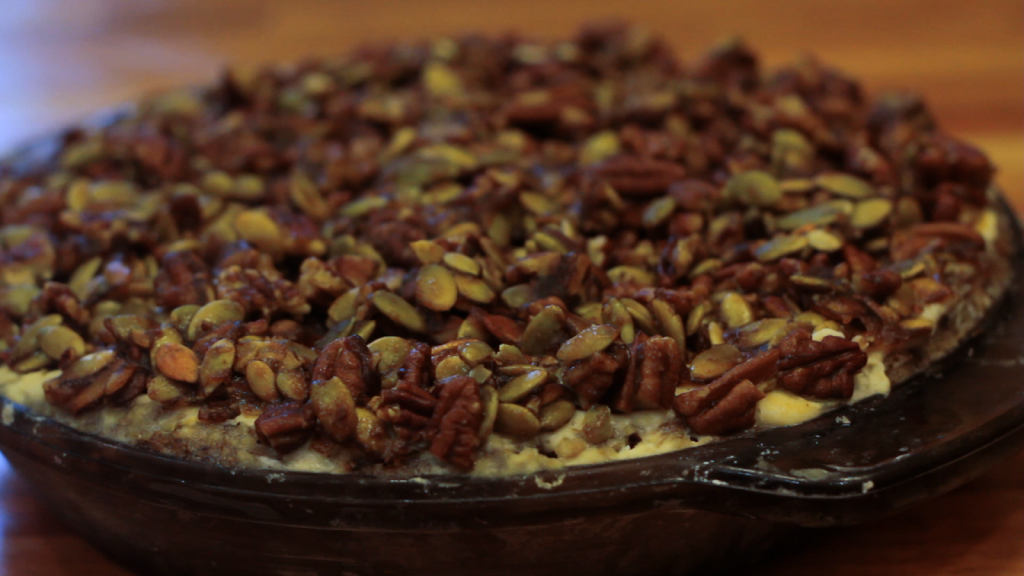
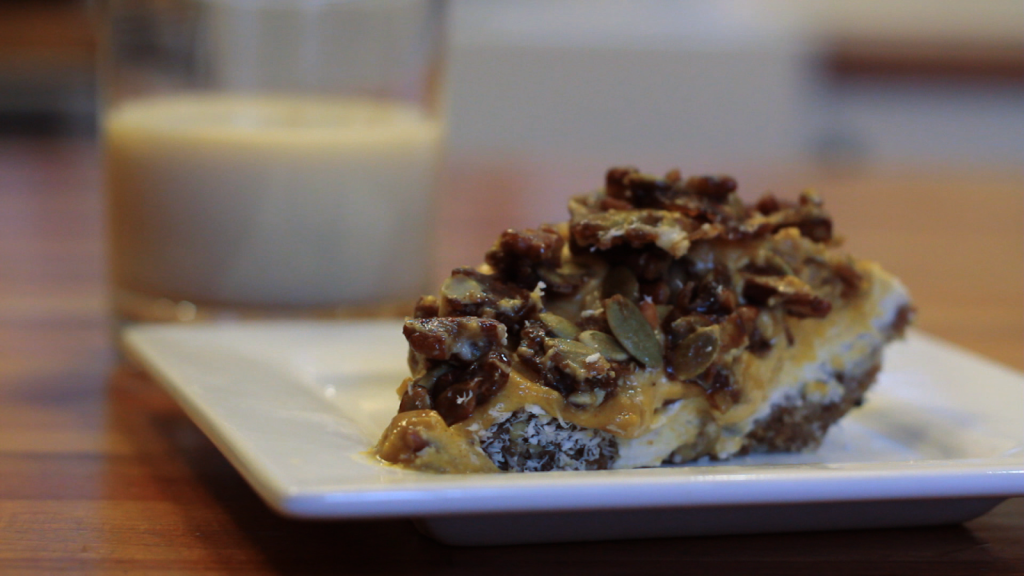
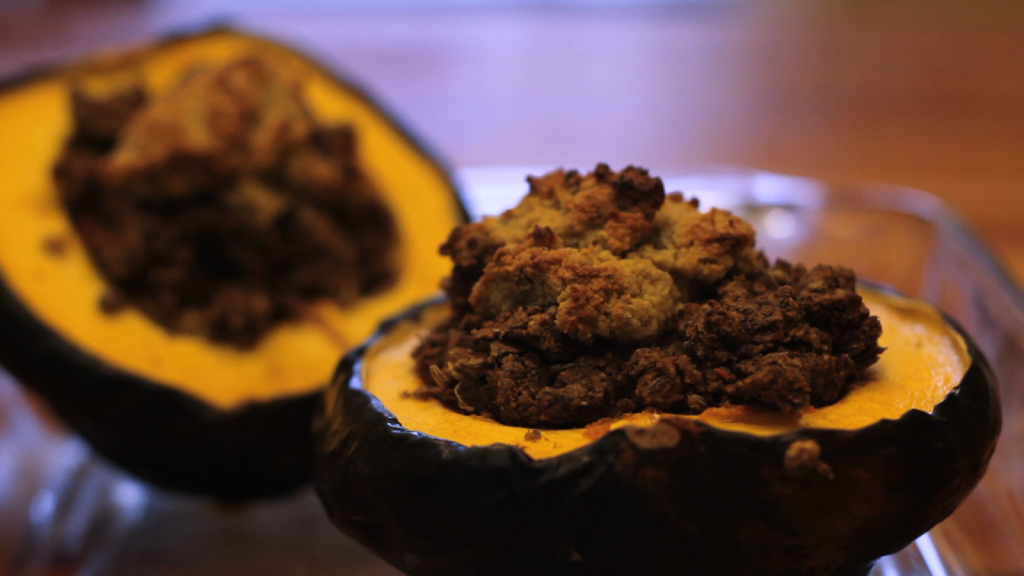
One of the things people worry about when contemplating going vegan is what the holidays will be like, particularly Thanksgiving. I recently received an email from a non-vegan friend who said that she had just learned about what happens to turkeys in slaughterhouses “and now Thanksgiving is ruined!”
Au contraire! The best Thanksgiving I ever had was my first vegan Thanksgiving. I felt that I was actually honoring the true spirit of the holiday, which is about giving thanks and celebrating life. Plus, putting aside the ethics and the health, it was the most delicious Thanksgiving I had ever had. After all, aren’t the real stars of the Thanksgiving meal the sides and the desserts?
One option for a vegan Thanksgiving is to have the meal be made up entirely of delicious side dishes. Personally, I think that would be absolutely fantastic, but I also know many of us are used to and enjoy having a main dish as a central focal point. Hence, this gorgeous stuffed acorn squash recipe!
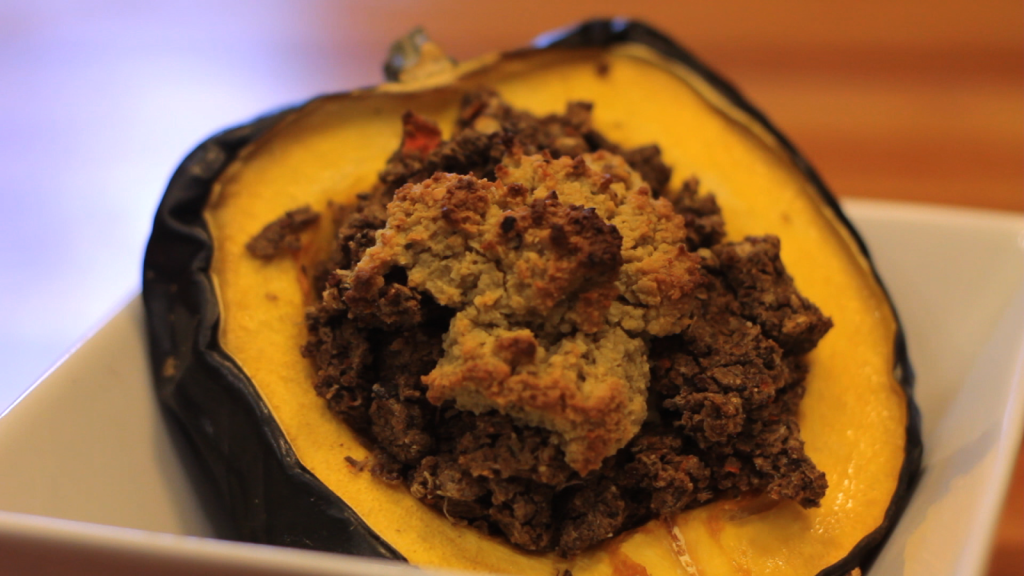
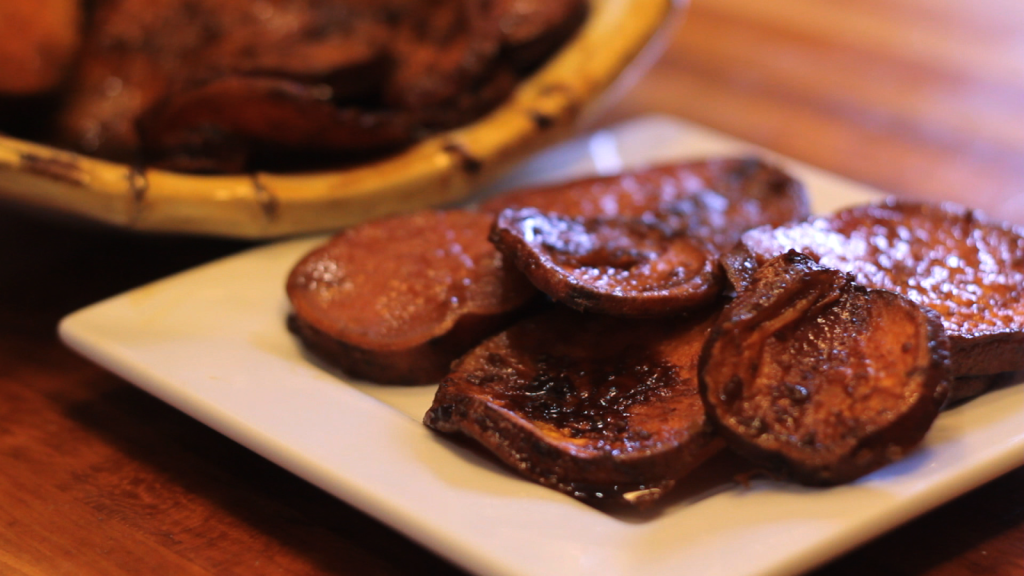
Ladies and gentlemen, I present to you what may be the greatest side dish of all time!
The first time I made this dish I ended up completely ignoring the main course and instead consumed all the yams.
By myself.
It was glorious.
I will most definitely be making this dish for Thanksgiving this year and then again when we go down South to visit my in-laws over Christmas.
Also, just to be totally honest here, when I say “yams” I actually mean “sweet potatoes.” Don’t be mad though, because when you say “yams” what you probably mean is “sweet potatoes” too. What we commonly refer to as a “yam” in the U.S. is actually a “sweet potato.” Even in grocery stores, what are labeled “yams” are usually “sweet potatoes.” The USDA has tried to crack down on this crazy scandal by requiring that sweet potatoes labeled “yams” include “sweet potatoes” in the label as well. That’s why you’ll often see “sweet potato yams.” Both yams and sweet potatoes are nutritionally similar but sweet potatoes have a nutritional edge because they have much higher levels of vitamin A, vitamin B6, and vitamin C.
While I usually don’t cook with oil because it is a processed food without any fiber, sweet potatoes (aforementioned “yams”) are one of those foods that benefits from being eaten with a small amount of fat. (Keyword here is “small,” folks! I’m talking 1-2 tablespoons for an entire recipe.) The fat allows us to better absorb the beta carotene, an antioxidant that is critical for eye health, bone health, and reproductive health.
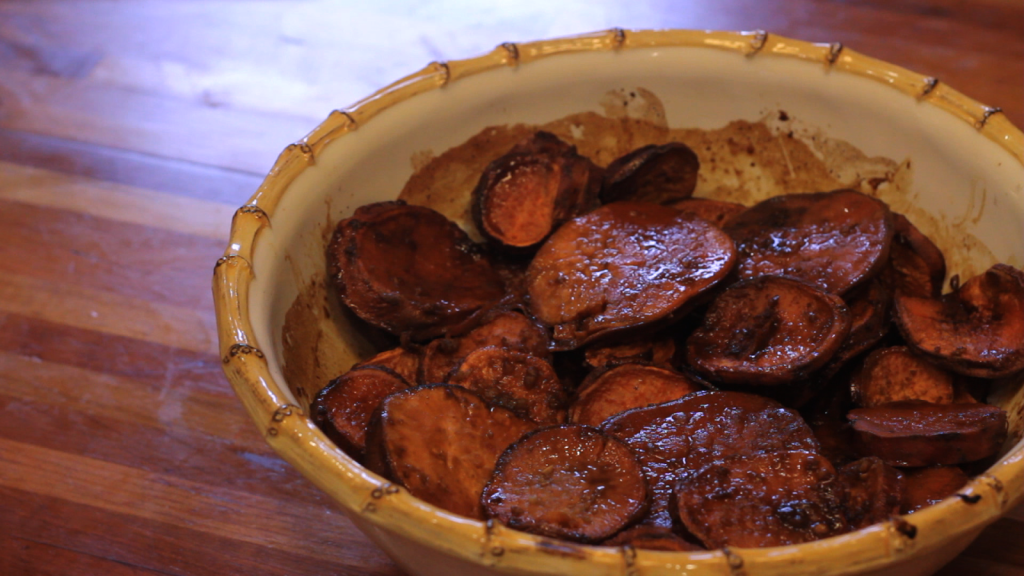
Instructions:
1. Preheat the oven to 425 degrees.
2. In a large bowl, toss the sweet potatoes with 1 tablespoon of the sesame oil.
3. Spread the sweet potatoes onto a parchment-lined baking sheet in a single layer and roast for 25 minutes. Flip, and roast for another 25 minutes.
4. Place the cinnamon stick at the bottom of a 2-quart baking dish, and add the sweet potatoes in layers. Set aside.
5. In a medium-size bowl, whisk together the remaining six ingredients plus the remaining tablespoon of sesame oil and pour over the sweet potatoes.
6. Bake, uncovered, for 30 minutes.